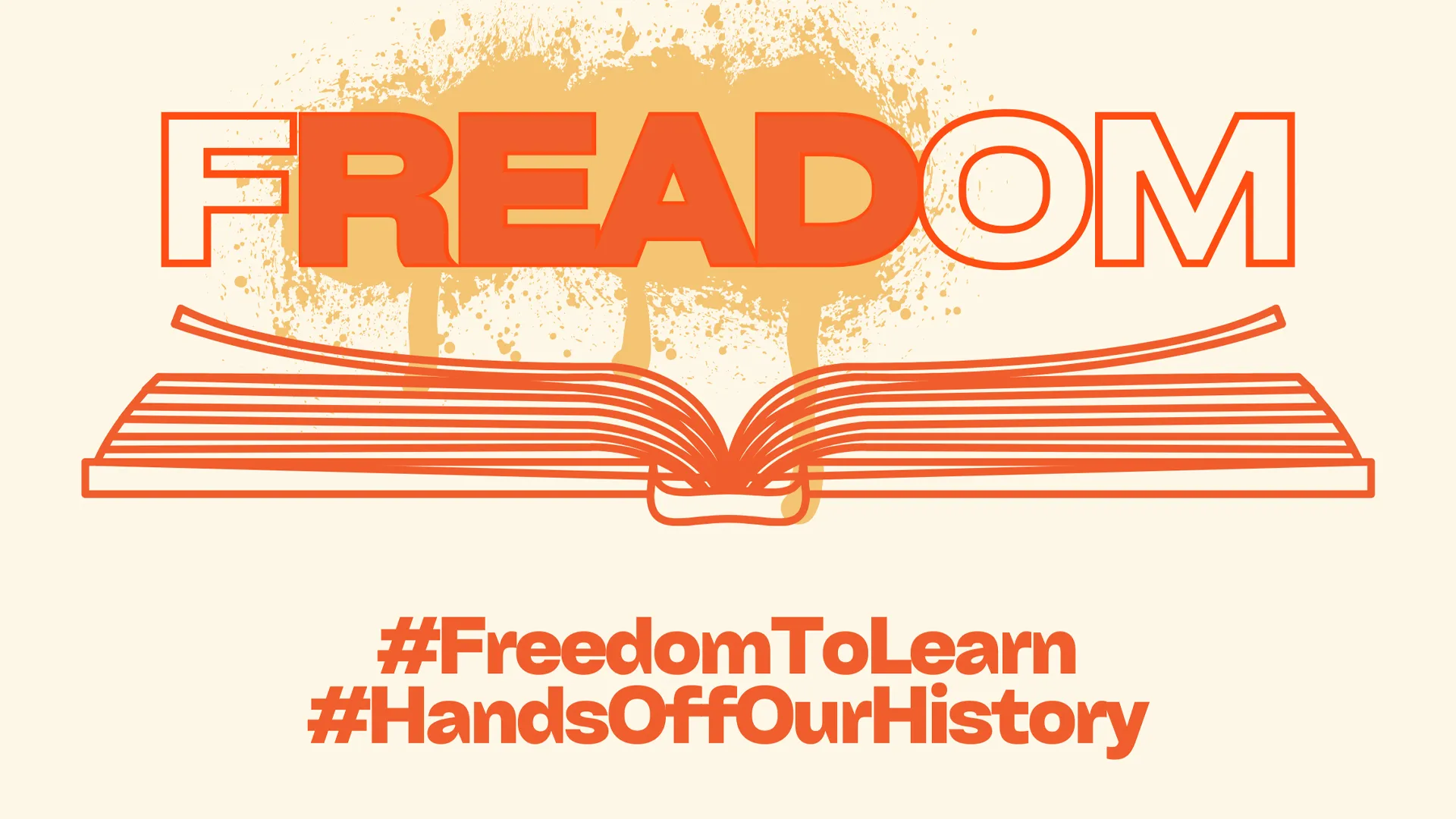Key Takeaways
- Amid escalating political attacks on public education from the Trump administration, more than 200 events took place across the United States—and even internationally—on June 7 as part of the Teach Truth Day of Action.
- Educators, students, and allies came together to oppose book bans, curriculum censorship, and policies that threaten the integrity of public schools.
- With support from the NEA and the Zinn Education Project, participants taught banned history in public spaces, honored local leaders, and rallied to protect students’ rights to learn the full truth of U.S. history.
When a school librarian at Union Public Schools, Oklahoma, posted a video saying, “My radical liberal agenda is teaching kids to love books and be kind,” the response was swift and terrifying. The post, amplified by Libs of TikTok, led to six consecutive days of bomb threats. Families, many of them immigrants and low-income, were forced to evacuate schools daily. Children lingered in fear, caught in a political clash they never asked to enter.
That same social media user, Chaya Raichik, was later appointed to Oklahoma’s State Library Committee.
Oklahoma is just one example of how anti-public education politicians are threatening educators, librarians, and students. Across the country, similar attacks are unfolding.
It’s these chilling examples of the real-world consequences of anti-public education politicians that helped galvanize thousands of educators, students, and families to take part in the Teach Truth Day of Action on June 7. Across all 50 states, from Alaska to Puerto Rico—and even as far as Barcelona, Spain—more than 200 events were held to demand the right to teach and learn honest, inclusive history.
A Movement with Deep Roots
Led by the Zinn Education Project in partnership with NEA and co-sponsored by more than 80 civil rights and advocacy organizations, the Day of Action comes amid an escalating campaign of censorship.
“These education censorship laws are a warning sign of a deeper authoritarian threat—one that aims to control how young people think,” says Jesse Hagopian, editor of Rethinking Schools and author of “Teach Truth: The Struggle for Antiracist Education.”
Hagopian adds, “When the government tries to erase the truth about racism, colonialism, LGBTQIA+ identity, and the climate crisis, they’re not just closing the door on the past—they are locking students out of the future.”
From book swaps to banned history lessons in public parks, the actions were as creative as they were defiant. In Washington, D.C., educators marched between the National Museum of African American History and Culture and the National Museum of the American Indian. In Cleveland, Ohio, activists and allies honored local school board members who put students first. In a dozen cities across the country, people gathered for public screenings of “Banned Together,” a documentary about student resistance to book bans and curriculum censorship.
Educators and Allies Stand Together
NEA Vice President and Virginia music teacher Princess Moss reminded the country what’s at stake: “Over the past several years, some politicians have been trying to censor the lessons taught in our classrooms. They’re trying to ban books and exclude certain kids based on what they look like or where they live… But together, we can make our voices loud and clear to protect the freedom to learn and teach truth,” she says.
Educators and librarians continue to face relentless attacks, but their resolve is growing stronger.
Becky Calzada, president of the American Association of School Librarians, issued a call to action: “Librarians are not the problem. They are champions of intellectual freedom, defenders of curiosity, and protectors of every student’s right to explore and learn,” she says. “The First Amendment doesn’t just protect the right to speak—it protects the right to receive information. And when books are banned, that right is denied.”


